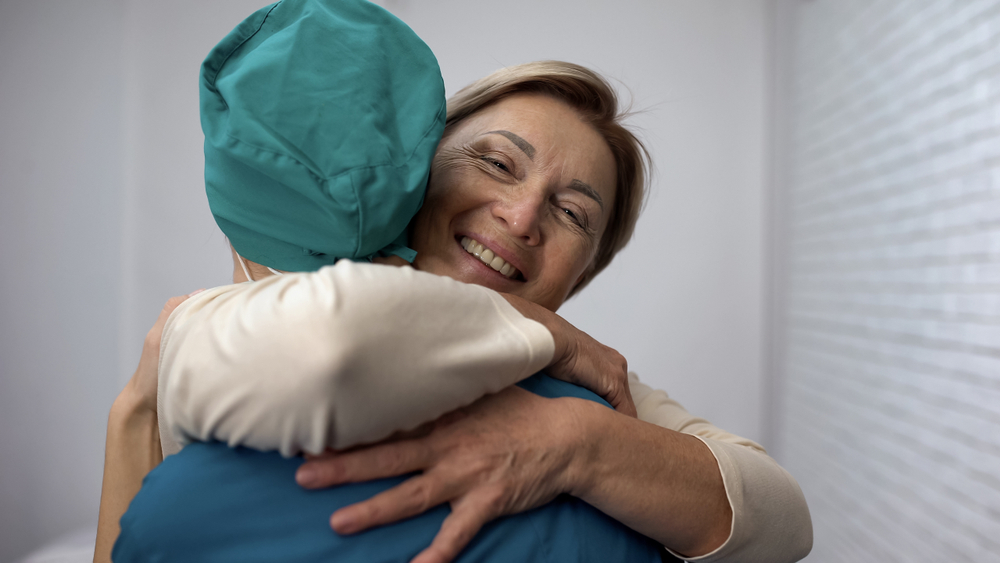As a medical student, I remember being counseled by a very wise (and very brilliant) physician mentor about “therapeutic touch.” It might just be a pat on the arm – but he made a point to touch every patient he saw (naturally, in a socially appropriate way) even when the encounter was largely verbal. Leaving aside the fraught issue of unwanted touching by anyone, let’s stick to a discussion of the therapeutic value of context-appropriate physical touch. This is a basic human need. Children neglected by parents fail to thrive (as do most mammals). Oxytocin levels rise in response to touching, hugging or even sitting close to another person, and is associated with a sense of happiness and a reduction in stress levels. I remember hugging my children when they were little just because it made me feel happy.
Many patients are starved for physical touch and that is especially true for patients with chronic non-healing wounds. Patients with wounds are often “modern lepers,” isolated because of odor, drainage and wounds located in embarrassing places. We may be the only people who approach them without fear, shock, or repulsion. We may be the only people who touch them.
I have been thinking about that more lately because the COVID-19 pandemic changed the way I interact with patients physically. We don’t even shake hands with patients these days, much less hug them. And I realized that it’s been bad for my mental health. I’m a widow whose kids are gone, and work is the only way I socialize. The pandemic has put us all into a “hug deficit” that must surely be a contributor to the epidemic of burnout, stress, depression and anger management issues.
Recently I ran across a 2014 study that seems bizarre when seen through the lens of the pandemic. Over 400 people were enrolled in a prospective trial in which their levels of interpersonal conflict and daily hugs were assessed, and then they were intentionally exposed to a cold virus and observed in quarantine for the development of symptoms. As you might have guessed, subjects with the most hugs had the least problem with subsequent viral illness.
Unfortunately, given the extreme infectivity of the Delta strain of COVID-19 currently sweeping across the country, it’s hard right now to make the case for hugging as a deterrent to viral illness. However, I’ve been pondering the implementation of “COVID vaccination hugs.” I suspect most people are in a hug deficit, and it’s only one of the many reasons we are struggling.
Additional Reading:

Dr. Fife is a world renowned wound care physician dedicated to improving patient outcomes through quality driven care. Please visit my blog at CarolineFifeMD.com and my Youtube channel at https://www.youtube.com/c/carolinefifemd/videos
The opinions, comments, and content expressed or implied in my statements are solely my own and do not necessarily reflect the position or views of Intellicure or any of the boards on which I serve.



